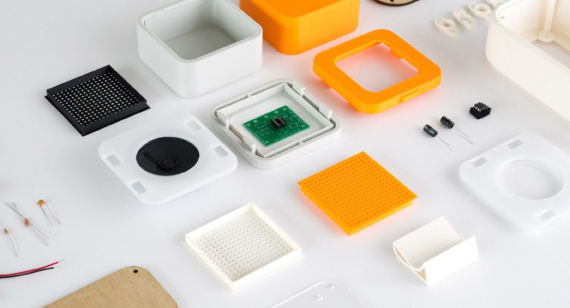There’s one of only a few 3D printing processes that is possible at both a desktop- and industrial-level. It’s fused deposition modeling (FDM), although you’ll sometimes see it referred to as fused filament fabrication (FFF). It’s a great printing process to create prototype parts to test fit and form. Because it prints using thermoplastic material, it also delivers parts that are functional when in a high-heat environment, or when exposed to chemicals or mechanical stress.
Our customers have long been able to take advantage of many different 3D printing technologies–SLA, MJF, PolyJet, DMLS, SLS, Carbon DLS–but with our acquisition of Hubs, we now offer fast FDM printing, too. While the underlying technology for both desktop and industrial FDM is basically the same, understanding the differences between the two is vitally important to the success of your FDM parts.

A Quick History and How FDM Works
FDM has been around since 1988 when Scott Crump of Stratasys invented the technology.
With FDM, filaments of thermoplastic material are heated and extruded into layers that shape the part. The part grows on both the X and Y axes, and once each layer is complete and has cooled, the part lowers in the build chamber and the next layer is laid down, building the part upward along the Z axis. A support structure is needed for FDM parts, and removal of that can be difficult because the part tends to adhere to the supports. Dissolvable supports are available, but costs can increase to account for work needed to remove them without damaging the part. For that reason, dissolvable supports tend to be used with industrial-grade printers.
It's important to note that FDM parts tend to focus on the periphery of the part, using infill structures at various densities to provide inner support for the part, which would otherwise be hollow.
Desktop vs. Industrial FDM
The primary differences between these two forms of FDM printing are dimensional accuracy and speed. While layer thickness is the same across both, an industrial-grade FDM machine provides considerably more accurate parts, and can do them faster, thanks to the robustness and size of the equipment itself. Plus, desktop FDM printers can be persnickety and require frequent recalibrations, so getting lots of parts right takes longer.
Bottom line: Dimensional accuracy, consistency, and speed are the characteristics that will make or break your decision to go with one process or the other. Here's a look at the FDM 3D printing capabilities at Hubs:
| Requirement | Desktop FDM | Industrial FDM |
|
Maximum build size |
19.68 x 19.68 x 19.68 in. (500 x 500 x 500mm) |
15.98 x 13.97 x 15.98 in. (406 x 355 x 406mm)* |
|
Dimensional accuracy |
± 0.5% with a lower limit on ± 0.0196 in. (0.5mm) |
± 0.25% with a lower limit: ± 0.01 in. (0.25mm) |
|
Layer height |
0.004-0.012 in. (100-300μm) |
0.004-0.012 in. (100-300μm) |
| Infill |
20-100% |
Ultra-light, Light, Solid |
*Up to 35.984 x 23.980 x 35.984 in. (914 x 609 x 914mm) via manual review
With industrial FDM, one thing to remember is that if you want to use carbon-reinforced nylon (Onyx), your maximum build size is 12.598 x 5.197 x 6.063 in. (320 x 132 x 154mm).
Comparing Materials for Desktop and Industrial FDM
This is another area in which your end-use needs will dictate which process you choose. While there is some overlap between materials for each type of FDM, the quality of the industrial-quality materials is better suited to manufacturing stronger, longer-lasting parts. Here are the available materials at Hubs:
|
Desktop FDM materials |
Industrial FDM materials |
||
|
PLA |
Prototyping PLA |
Nylon |
Markforged Onyx |
|
PETG |
Prototyping PETG |
PEI |
ULTEM 9085, ULTEM 1010 |
|
ASA |
Prototyping ASA |
ASA |
Stratasys ASA |
|
ABS |
Prototyping ABS |
ABS |
ABS M30, ABSplus |
|
TPU |
Prototyping TPU with Shore Hardness 85A-95A |
|
|
In all cases, due to the heating and cooling of FDM materials while in the build chamber, your builds are subject to warping and other undesirable characteristics, so careful thought has to be put into your design.
FDM Considerations
As for comparing desktop to industrial FDM, both will provide you with high-quality, durable parts at a reasonable cost. Your decision comes down to materials, dimensional accuracy, and cost. If you’re in need of less precise prototypes, desktop FDM will get you where you need to be less expensively. If you need more precise, higher-quality materials, industrial FDM is the way to go. Either way, our team at Hubs can help you get the parts you need. Upload your parts today!

A mix of colors and material types can be printed with FDM.






